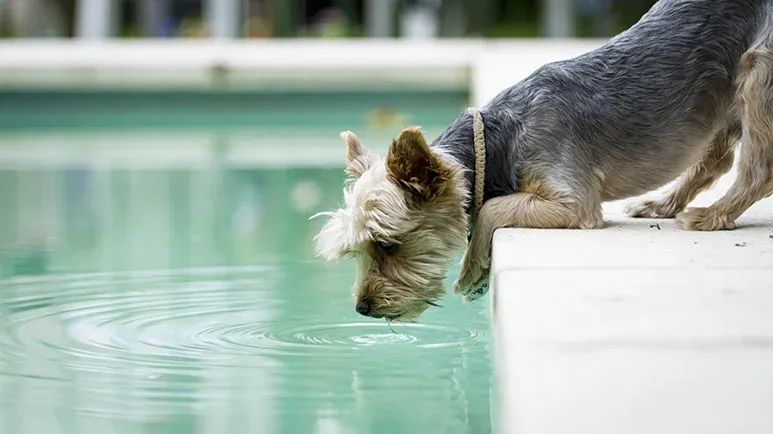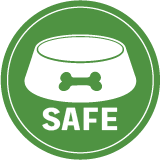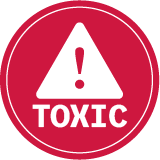Why Pool Water Isn't a Pup-Approved Drink
A swim in the pool can be the perfect way to cool off on a hot summer day, but that clear, sparkling water isn't as harmless as it looks. Here's why your dog shouldn't drink it.

STORY AT-A-GLANCE
- Pool water may look clean, but it contains chemical treatments that can cause digestive upset, dehydration, and toxicity in dogs who drink it regularly
- Whether out of thirst, play, or curiosity, dogs may lap up pool water without hesitation, especially if no fresh alternatives are readily available nearby
- Chlorine, chloramines, and salt can irritate your dog's gut, while biological contaminants and poor pool maintenance increase the risk of infection or toxic exposure
- From vomiting and diarrhea to life-threatening saltwater toxicosis or rare cases of water intoxication, drinking pool water poses real health risks to your pup
- Offer fresh water, supervise play, train with cues, and restrict access during chemical treatments to ensure your dog enjoys summer safely and responsibly
As temperatures rise and summer approaches, many families eagerly anticipate time spent outdoors by the pool. For pet parents, the poolside becomes an inviting space not only for themselves but also for their canine companions.
It may seem harmless, even practical, to let your dog swim and sip from the water while enjoying the sunshine. However, despite its seemingly harmless appearance, pool water is not a safe or recommended source of hydration for dogs.
Don't Fall for the Misconception That 'It's Just Water'
To a thirsty dog, the shimmering surface of a backyard pool may appear to be nothing more than a vast, enticing bowl of water. Pups drink pool water for several reasons, such as:
- Thirst — Dogs that have been active in the sun may instinctively seek hydration from the most accessible source.
- Play behavior — Fetching toys in the water or engaging in roughhousing can cause them to swallow water unintentionally.
- Curiosity — For puppies and adolescent dogs, the pool is a novel experience, and tasting it is part of their exploration.
- Lack of alternatives — If fresh water is not readily available, dogs will naturally turn to the next closest option.
Left unchecked, this behavior may become habitual; however, the problem lies in what's beneath that clean-looking exterior. Pool water is far more complex than it seems, and ingesting it can increase the risk of long-term exposure to harmful substances.
What's Lurking in Your Pool Water?
Although pool water looks clear, its chemical makeup includes disinfectants, stabilizers, and trace contaminants. These treatments render the water safe for swimming, but unsuitable for consumption. Here are some examples of the harmful elements found in your pool water:
- Chlorine — A common and necessary additive in swimming pools, this chemical's primary function is to kill bacteria, algae, and other microorganisms that could pose risks to human swimmers. While safe in controlled amounts for brief skin exposure or accidental ingestion, chlorine becomes problematic when dogs intentionally ingest it or consume it in high volumes.
According to the U.S. Centers for Disease Control and Prevention (CDC), chlorine levels up to 4 milligrams per liter are generally considered safe for incidental human exposure. Most pools maintain levels between 1 and 3 milligrams per liter.1 However, the ingestion of even moderately chlorinated water can irritate a dog's gastrointestinal tract, leading to symptoms such as vomiting, drooling, or stomach pain.2
Additionally, chlorine breaks down into chloramines when it reacts with organic matter, such as urine, feces, or debris. These chloramines not only create a harsh odor often mistaken for "strong chlorine," but they also irritate the eyes, skin, and mucous membranes.3 Their presence increases the irritant load in pool water, making it even less suitable for drinking. - Salt (in saltwater pools) — Pet parents consider saltwater pools a "safer" alternative to chlorinated pools, but although they contain less chlorine, they are not completely chemical-free.
Moreover, ingesting salty water — even at the lower concentrations found in saltwater pools — can lead to gastrointestinal upset, including vomiting, diarrhea, and dehydration. In more severe cases, it may trigger saltwater toxicosis (poisoning), especially in small or dehydrated dogs. - Imbalanced water and biological contaminants — A pool that is under-treated, poorly maintained, or unbalanced in terms of pH and sanitizing agents can harbor a variety of pathogens. These include bacteria, protozoa, parasites, and algae — especially blue-green algae (cyanobacteria), which are known to produce toxins that are fatal to dogs.4
Health Risks Associated with Drinking Pool Water
Even though dogs, like humans, may inadvertently swallow small amounts of water during swimming or play, intentionally or repeatedly drinking pool water can result in mild to severe health consequences. These include:
- Gastrointestinal problems — Even small amounts of chlorine can irritate a dog's digestive system, leading to vomiting, diarrhea, excessive drooling, and abdominal discomfort. These signs may appear mild at first, but repeated ingestion can exacerbate the symptoms.
- Dehydration and electrolyte imbalances — Ironically, drinking pool water can worsen dehydration. The salt or chemicals may cause your dog to urinate more or experience gastrointestinal losses, which deplete hydration and essential electrolytes. This can lead to muscle weakness, irregular heartbeats, and reduced energy levels.
- Water intoxication — Though rare, this is a serious condition in which a dog consumes excessive water in a short period. Early signs of water intoxication include bloating, vomiting, glazed eyes, staggering, and lethargy. Prompt intervention is crucial.
How to Keep Your Dog Safe Around Pool Water
With the proper precautions, your dog can still enjoy swimming and spending time near the pool without the risks of drinking the water. Here are simple, practical, and effective strategies.5,6
- Always provide fresh, clean drinking water — Keep a bowl of cool, fresh water near the pool at all times. Make it easy for your dog to choose the healthier option. For picky pups, a pet fountain with circulating water may be a more appealing option.
- Supervise swim sessions closely — Never leave your dog unattended near the pool. Active monitoring helps you intervene quickly if they begin drinking pool water or show signs of distress. Be especially vigilant during hot weather or high-energy play sessions.
- Use verbal commands and redirection — Training your dog to respond to commands like "leave it" or "no drink" can be helpful. Redirect their attention with toys, treats, or games away from the water's edge. Reinforce positive behavior consistently.
- Give your dog breaks — Encourage frequent rest periods indoors where it's cool and comfortable. Resting for a break reduces their urge to drink pool water to cool down or rehydrate. Offer a shaded area poolside as a resting zone as well.
- Limit access during chemical treatments — When performing a chlorine shock or adjusting pool chemicals, keep your dog away from the pool for at least 24 hours, or until test kits confirm safe levels. During this time, secure all chemical containers in a locked, pet-proof area.
Better Water Play Alternatives
If your dog enjoys water but you're concerned about safety, consider these alternatives that provide enrichment without chemical risks:
- Dog-specific pools — These shallow, chew-resistant plastic or inflatable pools can be filled with fresh water daily for supervised play.
- Sprinklers and splash pads — Many dogs enjoy chasing and jumping through water jets, which offer fun without the risks of drinking.
- Cool baths — For dogs who tolerate it, a quick rinse in a kiddie pool or tub filled with clean water offers relief from the heat.
These methods give your pet the joy of water play while eliminating exposure to hazardous substances.
Let Your Pet Enjoy the Water Without Any Worries
Pool time can be fun, refreshing, and a great bonding activity when done responsibly.
By understanding the risks associated with ingesting pool water and taking proactive measures to prevent it, you can ensure that your dog remains healthy, hydrated, and happy all summer long.
Your dog relies on you to make the safest decisions. With thoughtful planning, you can create a summertime experience that prioritizes fun while maintaining good health.










